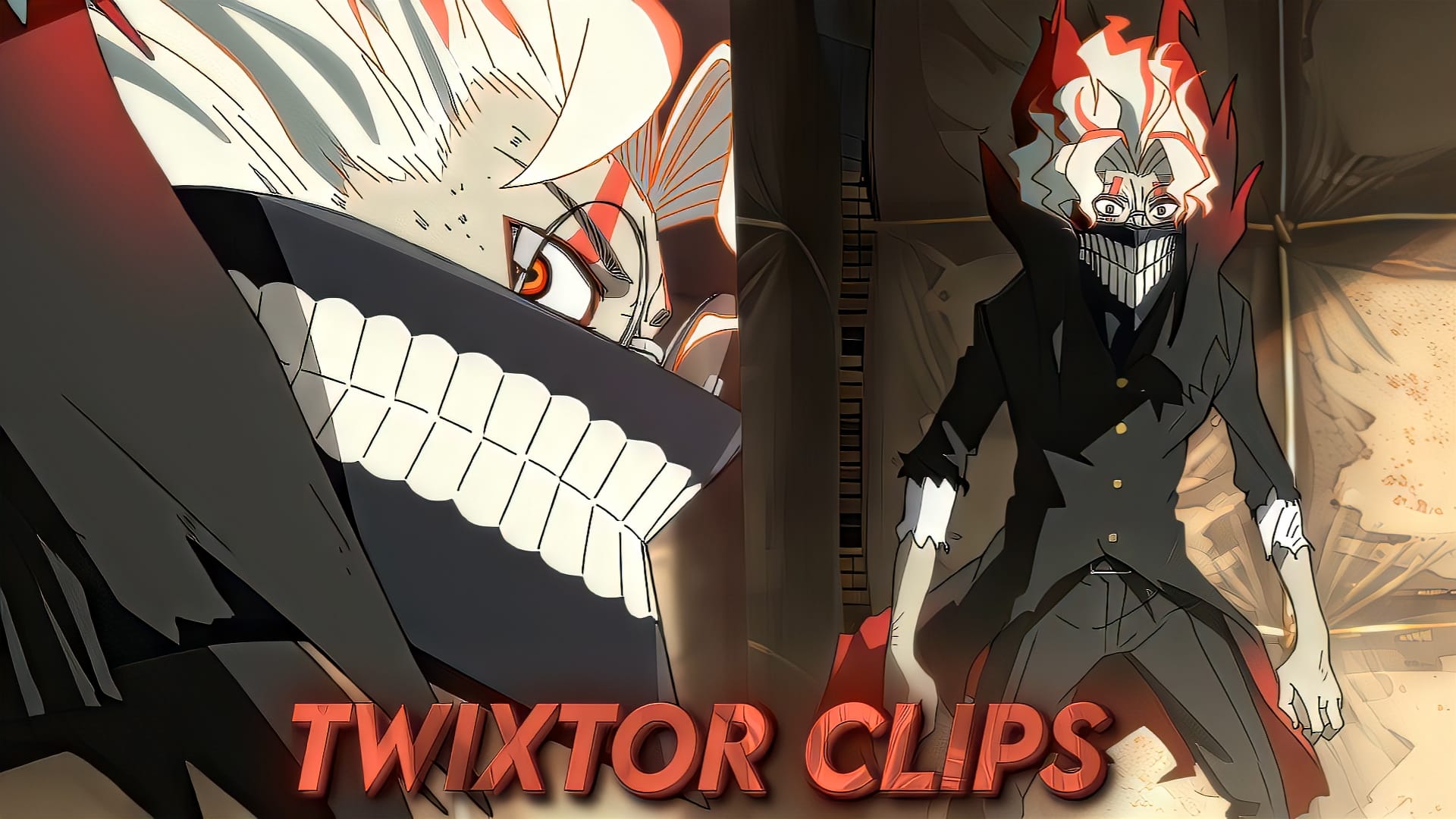Don’t forget to tag me on your edits (@vullock_)

▼ [4K Twixtor] ▼LINK
Twixtor in Professional Anime Production:
While Twixtor is more commonly associated with fan edits and post-production work, it is occasionally used in the anime production process itself. Japanese animation studios often rely on specialized software for animation and visual effects. Twixtor can be applied to these productions to enhance slow-motion scenes, where it helps to create a smooth transition between frames that might otherwise look choppy or inconsistent. In high-budget anime series or films, animators can take advantage of cutting-edge software tools like Twixtor to add fluid, dramatic effects to battle sequences or key emotional moments. These scenes, whether in a shonen anime (like Naruto, Dragon Ball Z, or Demon Slayer) or in a more stylistic production, benefit from the effect of stretching time or emphasizing certain actions. For instance, in a fast-paced fight, slowing down the impact of punches or sword slashes can make them appear more intense and impactful.Twixtor in AMVs and Fan Edits:
The most well-known use of Twixtor in the anime community comes in the form of AMVs (Anime Music Videos). These fan-made videos combine anime clips with music, and Twixtor plays a significant role in making them visually dynamic. By slowing down certain scenes, animators can sync the anime’s action to a song, making it more dramatic or rhythmic. For example:- Action scenes: During a fight, the software allows for extended, fluid movements, showcasing each punch, kick, or sword swing in extreme slow motion.
- Emotional moments: Slow-motion can also be used to intensify emotional scenes, such as a character’s tearful confession or a poignant moment of loss.
- Music synchronization: Slow-motion scenes in AMVs often match the tempo or beats of the song being used. If the song has a dramatic drop or crescendo, Twixtor’s slow-motion effects can emphasize those musical transitions visually.
How Twixtor Works:
Twixtor is a plugin used within software like Adobe After Effects, Final Cut Pro, or Sony Vegas. Here’s how it operates:- Frame Interpolation: Twixtor analyzes the frames of a video and generates new frames in between, allowing for smooth slow-motion. It uses complex algorithms to determine how the image in the previous and following frames moves, then creates intermediary frames to produce a smoother transition.
- Time Remapping: You can speed up or slow down video clips without causing them to lose quality. This is key in anime where movement speed changes during critical moments—such as when a character powers up or when a dramatic fight slows down to emphasize the stakes.
- Motion Compensation: Twixtor compensates for complex movements and distortions by predicting motion in more complicated scenes, ensuring that the result isn’t awkward or pixelated.
Challenges and Criticisms:
While Twixtor has gained popularity, it’s not without its challenges:- Artifacts: Sometimes, Twixtor can create strange visual artifacts when there is a lot of fast movement, like jagged edges or blurriness. This can especially happen in scenes with intricate details (e.g., hair, clothes, or backgrounds) or when characters are moving against complex backgrounds.
- Overuse: In the world of AMVs, sometimes Twixtor is overused or applied too aggressively, leading to an unnatural feel. Fans who are critical of AMVs might find the slow-motion effects distracting if they feel forced or out of place.
- Rendering Time: Slow-motion effects can be time-consuming to render, especially when working with high-resolution video files. This can be a challenge for creators, especially for those who are working on tight deadlines or with limited computer resources.
Twixtor in Specific Anime Examples:
Though Twixtor is often used in fan-created content, it has been applied to some iconic anime moments by fans or professional editors. Here are some examples where the effect is frequently seen:- Fighting Anime: In anime like Attack on Titan, One Punch Man, My Hero Academia, and Demon Slayer, slow-motion effects are often added to enhance the impact of character movements or attack sequences. Fans use Twixtor to slow down critical punches, sword slashes, and transformations.
- Battle Sequences: In Dragon Ball Z, for instance, battles are fast-paced, and editing techniques like Twixtor can highlight specific moments—such as the buildup to a big energy blast or the slow-motion effect of a character powering up.
- Emotional Moments: Twixtor can be seen in AMVs that emphasize the emotional gravity of anime series, such as in moments of heartbreak or sacrifice.












